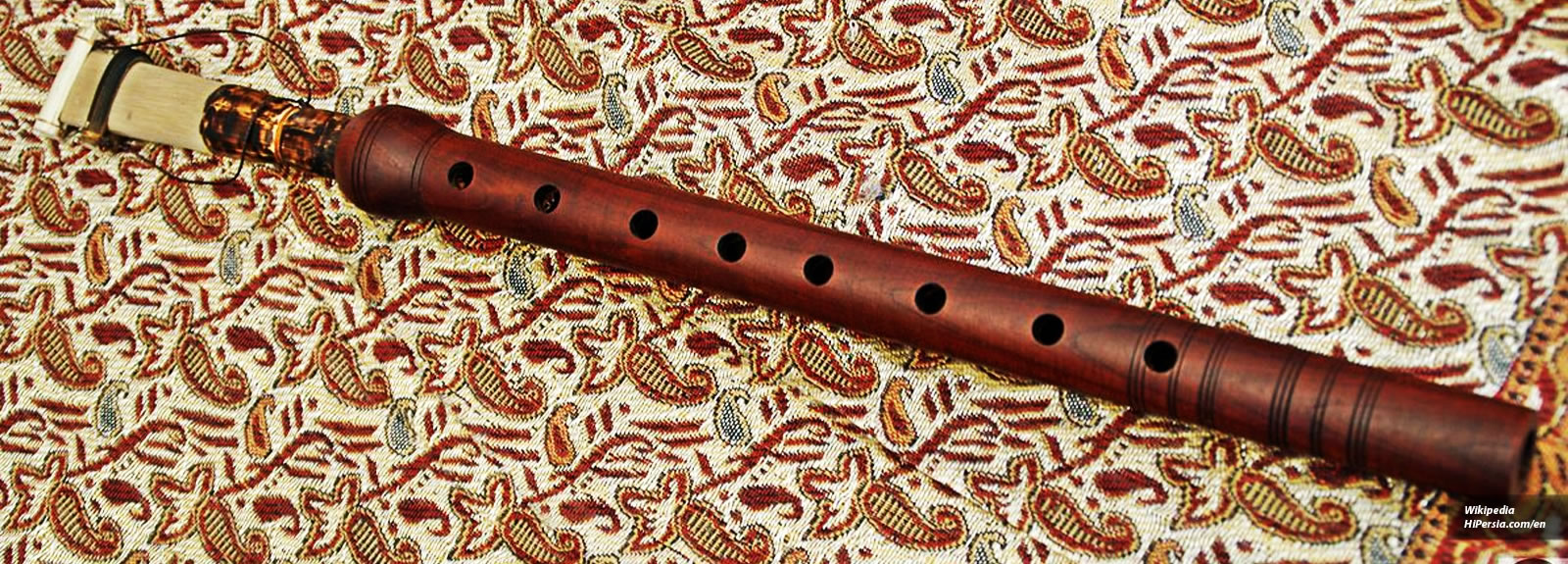



Balaban is a kind of double-reed Wind Instruments which has eight finger holes and one thumb hole.
Narmeye-Nay or Balaban is a wooden cylindrical-bore with 32 centimeters long which is common in the west till the northwest of Iran. It is also called Balaban in the northwest of Iran. It consists of a stem, a reed, a regulator, and a cap. The reed is surrounded by a wooden fastener that is sliding across the body (stem) of Balaban. This wooden fastener (regulator) is used to tune up the instrument because it also controls the opening and closing of the mouthpiece.
The first and principal matter when you play Balaban is the way you put the reed in your mouth. It is possible to perform nuance (dynamic in music) with Balaban because of the direct touch of the reed with the player’s mouth. These nuances start from pianissimo music definition (pp) to fortissimo music definition (ff). For an instant, the mouth of the player is not in direct touch with the reed in the Sorna musical instrument. When you play Sorna, the reed will be vibrating in the mouth, so changing the rhythm of nuance and controlling the sound with the lips is impossible. Balaban is playing with the circular breathing technique, which is used with all double-reed instruments in the Middle East.

Balaban is used in weddings, ceremonies, and holy days in Kurdistan Province. Balaban is playing in Ashik music in East Azerbaijan Province. Balaban is playing at the same performance level as Sorna and Dozaleh musical instruments. Ashik is performing with the singer and player of Qopuz (Komuz), Balaban, and Dayereh. Balaban is a very important musical instrument in Ashik music because it is such a vocal responsive instrument.






“Oh! Squander not this breath that Heaven hath lent thee, Nor make too sure another breath to borrow!’” Khayam